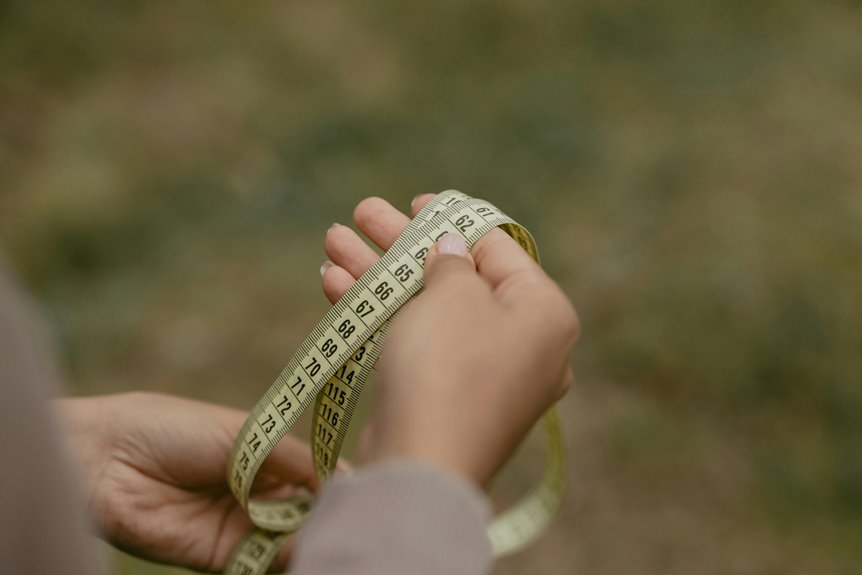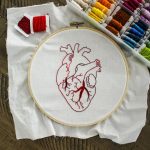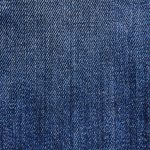To sew 11oz polypropylene fabric effectively, use a sturdy machine with heavy-duty needles like size 90/14 or 100/16 to prevent skipped stitches. Choose polyester or nylon thread for strength and adjust tension to avoid puckering. Cut carefully with sharp tools and stabilize fabric to reduce slipping. Sew slowly with medium stitch length and finish seams using serging or zigzag stitches. If you want to master techniques for flawless seams and durable finishes, keep exploring the best practices for this tough fabric.
Table of Contents
Key Takeaways
- Use a heavy-duty sewing machine with sharp 90/14 or 100/16 denim or leather needles to prevent skipped stitches on polypropylene fabric.
- Choose polyester or nylon filament thread and set machine tension moderately (4-5) to avoid puckering and ensure durable seams.
- Pre-wash fabric with mild detergent, cut accurately with sharp scissors or rotary cutter, and mark lines with fabric chalk for precision.
- Stabilize fabric with lightweight interfacing or tissue paper, sew slowly without pulling, and use a walking foot to prevent slipping and puckering.
- Finish seams by trimming allowances, using a serger or zigzag stitch, binding with bias tape, and pressing gently with a low-heat iron and pressing cloth.
Understanding the Properties of 11oz Polypropylene Fabric
Polypropylene fabric, especially the 11oz variety, offers unique qualities that make it both durable and lightweight.
Polypropylene fabric stands out for its durability and lightweight nature, especially in the 11oz weight.
When you work with it, you’ll notice it resists moisture and chemicals, which makes it perfect for outdoor gear and reusable bags. This fabric doesn’t absorb water, so it dries quickly and stays strong even in damp conditions.
It also has some stretch but maintains its shape well, giving you flexibility during sewing. However, polypropylene can be slippery, so you’ll want to handle it carefully to avoid shifting while cutting or stitching.
Its low melting point means you should avoid high heat, especially when ironing. Understanding these traits helps you prepare and sew this fabric efficiently without damaging it.
Choosing the Right Sewing Machine for Polypropylene
You’ll want a sturdy sewing machine that handles heavy fabrics like polypropylene with ease.
Use a sharp, size 90/14 or 100/16 needle to prevent skipped stitches and fabric damage.
Adjust your stitch settings to a medium length for strong, even seams without puckering.
Machine Type Recommendations
Selecting the right sewing machine can make all the difference when working with polypropylene fabric. Since this material is thick and tough, you’ll want a machine that handles heavy-duty tasks without struggling.
Consider these options:
- Industrial sewing machines: Designed for durability and power, they can sew through thick layers of polypropylene with ease.
- Heavy-duty home machines: These are versatile and affordable, ideal if you don’t sew polypropylene regularly but still need reliable performance.
- Walking foot machines: Their even fabric feed prevents slipping and puckering, ensuring smooth seams on slippery polypropylene.
Choosing a machine that matches your project scale and frequency will save you time and frustration.
Invest in one that provides consistent stitching and robust motor power for the best results.
Needle Specifications
Although choosing the right machine matters, using the correct needle is just as crucial when sewing polypropylene fabric.
You’ll want to use a sharp, strong needle designed for heavy-duty materials. A size 90/14 or 100/16 needle, such as a denim or leather needle, works well because it can penetrate the thick 11oz polypropylene without skipping stitches or causing damage.
Avoid ballpoint needles since they’re made for knits and won’t pierce polypropylene properly. Also, check your needle frequently for dullness and replace it as soon as you notice any resistance or skipped stitches.
Using the right needle guarantees smooth stitching, prevents fabric snags, and protects your machine’s performance. Don’t underestimate needle choice—it directly impacts your sewing quality and efficiency with polypropylene.
Stitch Settings Choices
Stitch settings play a pivotal role in successfully sewing polypropylene fabric. Choosing the right sewing machine and adjusting its settings guarantees strong, clean seams without damaging the material.
Polypropylene’s texture demands careful attention to stitch length, tension, and type.
When selecting your machine and settings, keep these tips in mind:
- Use a heavy-duty machine capable of handling thick fabric layers.
- Opt for a longer stitch length (around 3.0-4.0 mm) to prevent perforating and weakening the fabric.
- Adjust thread tension to avoid puckering or loose stitches, testing on scraps first.
Essential Needles and Thread Types for Durable Seams
To create durable seams when sewing polypropylene fabric, you’ll need the right needles and thread that can handle its tough, slippery texture.
Use a heavy-duty needle, such as a size 90/14 or 100/16 universal or denim needle, designed to pierce thick synthetic fibers without breaking or skipping stitches. Avoid standard needles, which can cause snags or uneven stitching.
For thread, opt for polyester or nylon filament thread; these offer strength, flexibility, and resistance to abrasion and moisture. Avoid cotton thread, since it’s weak and prone to rot.
When threading your machine, make certain the tension is properly adjusted to prevent puckering or thread breakage.
Using these essential tools helps guarantee your seams will withstand stress and last over time.
Preparing the Fabric Before Sewing
Before you start sewing, make sure to clean and wash your polypropylene fabric to remove any residues that might affect stitching.
Use precise cutting techniques to get accurate pieces that fit well together.
Also, consider treating the fabric beforehand to improve its handling and durability during sewing.
Cleaning and Washing Tips
Washing your polypropylene fabric at least once before sewing helps remove any residues and prevents future shrinkage. You want your project to fit perfectly, so pre-washing is essential. Use gentle methods to keep the fabric in great condition.
Here are some cleaning tips to follow:
- Wash in cold water using a mild detergent to avoid damaging the fibers.
- Avoid bleach and fabric softeners, as they can weaken polypropylene.
- Air dry the fabric flat or hang it; avoid high heat from dryers, which may cause warping or shrinkage.
Cutting Techniques for Accuracy
A sharp pair of scissors or a rotary cutter will make cutting polypropylene fabric much easier and more precise.
Before you start, lay your fabric flat on a clean, hard surface to prevent shifting. Use pattern weights or pins sparingly, as polypropylene can snag. Instead, try using a ruler or straight edge to guide your cuts, especially for straight lines.
Mark your cutting lines with a fabric pencil or chalk that contrasts well, so you can see them clearly. Cut slowly and steadily, applying even pressure to avoid jagged edges.
If you’re cutting curves, take your time and use smaller, controlled snips. Keeping your tools sharp and your fabric stable guarantees clean cuts, which is vital for accurate sewing and professional results with 11oz polypropylene.
Pre-sewing Fabric Treatment
Once you’ve cut your polypropylene fabric accurately, it’s important to prepare it properly before sewing to guarantee the best results. Treating the fabric beforehand helps prevent slipping, fraying, and uneven seams.
Start by:
- Washing and drying the fabric if the project allows, to remove any chemicals and reduce shrinkage.
- Pressing the fabric with a low-heat iron, using a pressing cloth to avoid melting or warping the fibers.
- Applying a fabric stabilizer or interfacing on the wrong side to add firmness and reduce stretch during stitching.
Taking these steps secures your polypropylene fabric behaves well under the needle and produces clean, durable seams.
Preparing your fabric carefully saves you time and frustration during sewing.
Stitch Settings and Techniques for Polypropylene
Choosing the right stitch settings is essential when working with polypropylene fabric to guarantee durability and prevent damage. Use a medium stitch length around 3.0 to 3.5 mm to avoid perforating and weakening the material. Opt for a polyester thread for strength and flexibility. A sharp needle size 90/14 minimizes skipped stitches. Use a straight stitch or a narrow zigzag for seams that require some stretch.
| Setting | Recommendation |
|---|---|
| Stitch length | 3.0 – 3.5 mm |
| Stitch type | Straight or narrow zigzag |
| Needle size | 90/14 sharp |
| Thread type | Polyester |
| Tension setting | Moderate (4-5) |
Adjust tension to avoid puckering but keep stitches tight enough for strength.
Tips for Preventing Fabric Slippage and Puckering
Getting your stitch settings right helps, but preventing fabric slippage and puckering takes a few more careful steps.
Adjusting stitch settings matters, but avoiding slippage and puckering requires extra care and technique.
You want your polypropylene seams to be smooth and strong, so try these tips:
- Use sharp, fine needles (size 80/12 or 90/14) to pierce the fabric cleanly without causing distortion.
- Stabilize the fabric with lightweight interfacing or tissue paper underneath to keep layers aligned and reduce shifting.
- Sew slowly and guide the fabric gently without pulling, allowing the feed dogs to move the material evenly.
Finishing Seams and Edges for Longevity
Because polypropylene fabric tends to fray easily, you’ll want to finish seams and edges carefully to confirm your project lasts.
Start by trimming seam allowances neatly to reduce bulk. Use a serger or an overlock stitch on your sewing machine to seal raw edges effectively. If you don’t have these, try a zigzag stitch close to the edge to prevent unraveling.
For extra durability, consider binding seams with bias tape or applying seam sealant designed for synthetics. Press seams gently with a low-heat iron and a pressing cloth to avoid melting the fabric.
Properly finished seams not only enhance your project’s strength but also give it a polished, professional look. Taking these steps confirms your polypropylene creation stays intact through wear and washing.
Troubleshooting Common Sewing Issues With Polypropylene
When sewing polypropylene fabric, you might encounter issues like puckering, skipped stitches, or needle heat buildup.
To tackle these problems, start by adjusting your machine settings and equipment. Here’s what you can do:
Begin by fine-tuning your machine settings and using appropriate equipment for the best sewing results.
- Use a sharp, new needle designed for heavy fabrics to prevent skipped stitches and fabric damage.
- Lower your sewing machine’s tension and use a longer stitch length to reduce puckering.
- Take breaks during sewing to avoid needle heat buildup, which can melt or damage the polypropylene fibers.
Frequently Asked Questions
Can 11OZ Polypropylene Fabric Be Machine Washed Safely?
Say you’ve got a polypropylene tote bag; you can machine wash it on a gentle cycle with cold water. Just don’t use bleach or high heat, or you risk damaging the fabric’s strength and color.
Is 11OZ Polypropylene Fabric Suitable for Outdoor Use?
You’ll find 11oz polypropylene fabric great for outdoor use because it’s durable, water-resistant, and UV-stable. It handles weather well, making it perfect for tarps, covers, and outdoor gear that need to withstand the elements.
How Do I Dye or Color 11OZ Polypropylene Fabric?
You can’t easily dye 11oz polypropylene fabric because it’s synthetic and resists most dyes. Instead, use fabric paints or spray-on dyes designed for synthetics to add color effectively without damaging the material.
What Are Common Applications for 11OZ Polypropylene Fabric?
You might think 11oz polypropylene’s tough texture limits uses, but it’s perfect for reusable bags, outdoor gear, tarps, and upholstery. You’ll love its durability and water resistance for many practical, everyday applications.
Can 11OZ Polypropylene Fabric Be Recycled?
Yes, you can recycle 11oz polypropylene fabric, but it depends on your local recycling program. Always check guidelines since some facilities accept polypropylene, turning it into new products, while others may not handle it.
- The Use of Nonwovens in Construction and Civil Engineering - July 11, 2025
- The Use of Nonwovens in Construction and Civil Engineering - July 11, 2025
- The Use of Nonwovens in Construction and Civil Engineering - July 11, 2025




